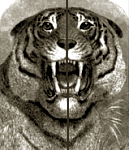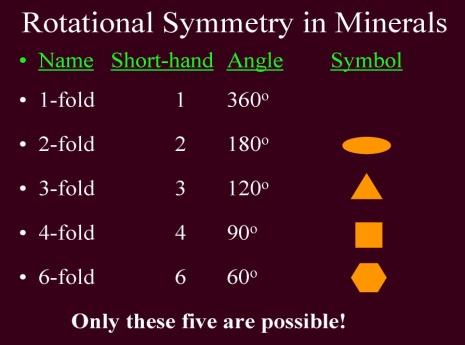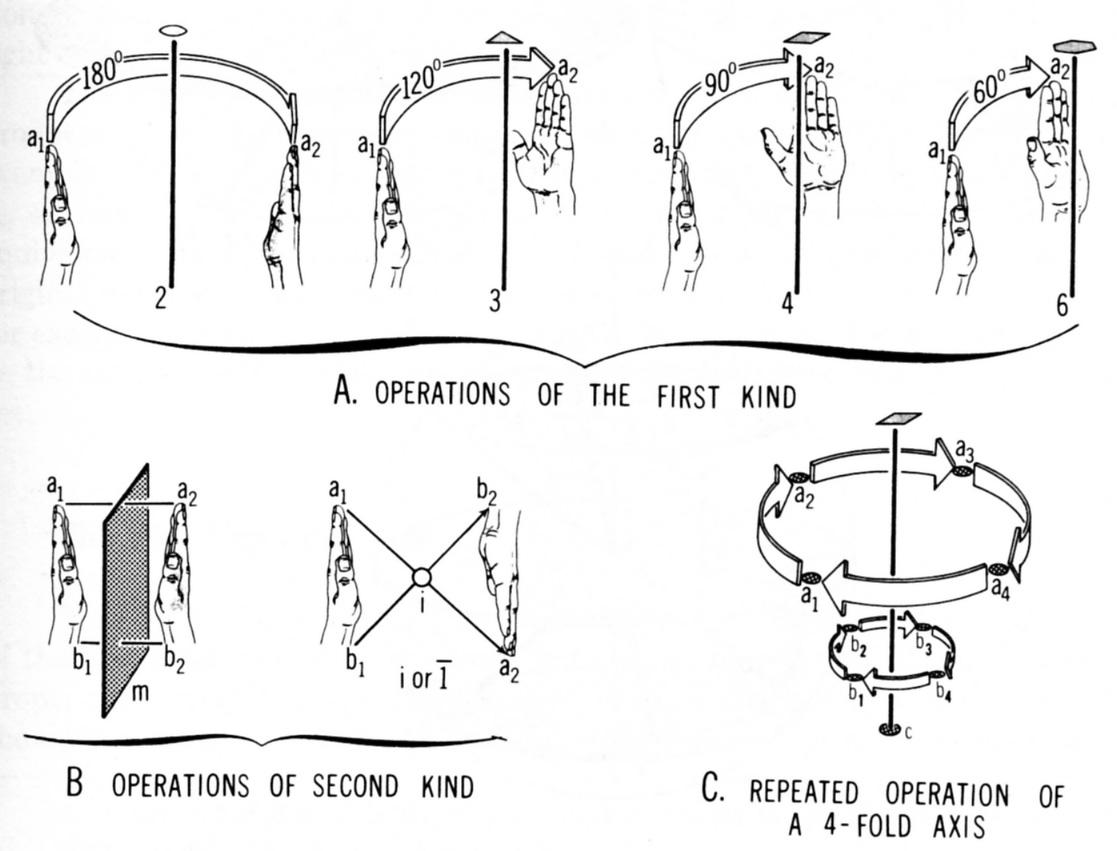
- •Notation
- •[Edit]Schoenflies notation
- •[Edit]Hermann–Mauguin notation
- •[Edit]The correspondence between different notations
- •Igneous, metamorphic, sedimentary processes
- •Igneous Rock
- •Sedimentary Rock
- •Metamorphic Rock
- •The Rock Cycle
- •It is possible for an object to possess more
- •2 Major kinds of symmetry operations
It is possible for an object to possess more
Than one type of symmetry.
Elements of symmetry - Symmetry centre

Identical features are
encountered, along a line passing
through a central point. Object and
image are at equal distance of i.
Symmetry centre. The symmetry centre terms such point in a figure, at holding through
which one any straight line will meet the identical and reversibly laid out parts of a figure
on spacing interval equal from it. The symmetry centre is designated by the letter (i).
If each crystal face has to itself equal, though and reversibly laid out facet the
yielded crystal possesses symmetry centre.
Some crystals can not have symmetry centre.
Elements of symmetry - Plane of symmetry Bilateral symmetryAny plane of symmetry
divides the crystal
form into two mirror
images.

Identical features are encountered, at equal but opposite
distances along any line perpendicular to the mirror plane.
Plane of symmetry. It is an imagined plane which one divides a figure on two equal parts so
that, one of parts is a reflexion of the other. The plane of symmetry is designated by (P).
a little before a plain label the number of planes is put, for example - 3Р, three planes of symmetry.
In crystals there can be one, two, three, four, five, six, seven and nine planes of symmetry.
Many crystals have no any plane of symmetry.
Line or bilateral symmetry
Shape has line symmetry when one half of it is the mirror image of the other half.
 You
get two halves,
You
get two halves,
each one is the mirror
image of the other.
So a symmetry plane
Is called a mirror
Plane with the symbol
(m)
The yellow line is the trace of a symmetry plane or mirror plane (m).
(m) letter is used in the Hermann and Mauguin international symbols
Elements of symmetry - Symmetry axes
Rotational symmetry
 2-fold
axis Rotation
2-fold
axis Rotation
Symmetry axes. The « symmetry axis » terms an imagined straight line,
at rotational displacement around which one, always on the same angle,
there is a combination of equal parts of a figure.
The Symmetry axis is designated by letter L
Elements of symmetry - Symmetry axes Rotation

3-fold axis
4-fold axis
6-fold axis
At rotational displacement on 360 ° may show a combination of facets
which may appear two, three, four or six times
(i.e. at each rotational displacement on 180, 120, 90 and 60 °).
The four points a1, a2, a3, and a4, consitute a set of symmetrically
equivalent points or equipoints.

1-fold axeExample: an astronaut on a fixed station looking at the earth.
He will see the same landscape after a total rotation of the
Earth, that is after a 360° rotation.
So, there is no repetitive image and thus, no symmetry at all.
The hermann-Mauguin symbol 1 signifies this total
lack of symmetry,
That is the existence of 1-fold axe.
Symmetry operations
The geometric mouvement to bring a given point a1 into coincidence with a symmetrically equivalent point a2 is called
a symmetry operation.
2 Major kinds of symmetry operations

Centre of symmetry
(inversion)-
Symbols: i or minus 1
Plane of symmetry (reflexion):
mOperations of the first kind :
The symmetry operation is generating the same hand as shown on the figure.
Operations of the second kind :
The symmetry operation is promoting a change of hand.
Symmetry through a point or a mirror generates a change of hands.
Proper and improper axesThe 1-, 2-, 3-, 4- and 6-fold axes represent operations of
the first kind. They are called proper axes.
Crystallographers recognize five other axes:
Called (bar 1, bar 2, etc) resulting from the operation of
1-, 2-, 3-, 4- and 6-fold axes combined with the operation
of inversion through a central point on the axis.
They are called inversion axes or improper axes as they
Represent the operations of the second kind.
External symmetry of crystalsThe external symmetry of any crystal must necessarily
corresponds to :
One of the five proper axes
One of the five improper axes
One of the 22 combinaisons of these axes
